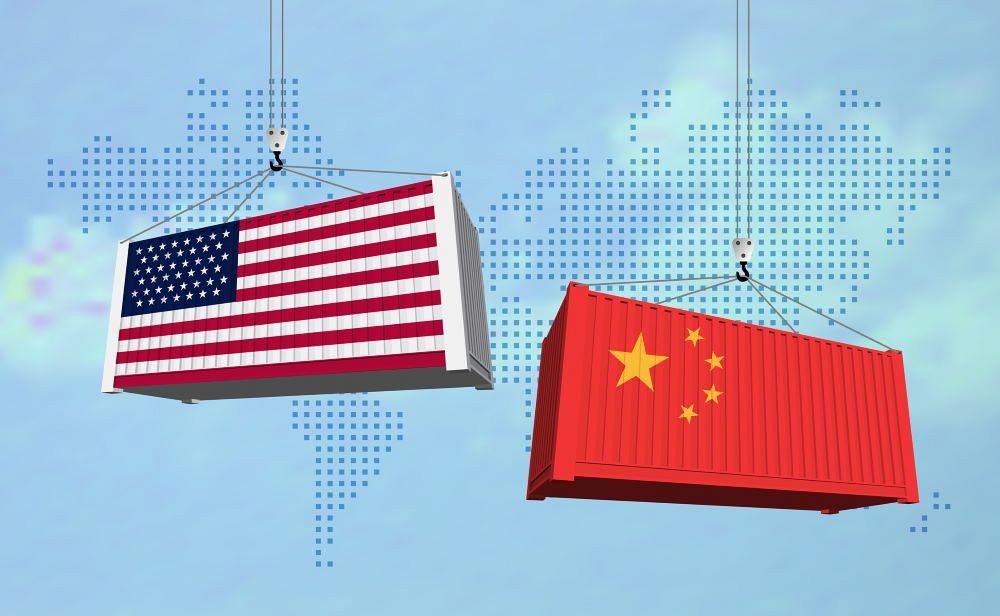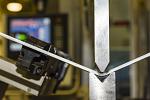Contributing Writer
- FMA
- The Fabricator
- FABTECH
- Canadian Metalworking
Categories
- Additive Manufacturing
- Aluminum Welding
- Arc Welding
- Assembly and Joining
- Automation and Robotics
- Bending and Forming
- Consumables
- Cutting and Weld Prep
- Electric Vehicles
- En Español
- Finishing
- Hydroforming
- Laser Cutting
- Laser Welding
- Machining
- Manufacturing Software
- Materials Handling
- Metals/Materials
- Oxyfuel Cutting
- Plasma Cutting
- Power Tools
- Punching and Other Holemaking
- Roll Forming
- Safety
- Sawing
- Shearing
- Shop Management
- Testing and Measuring
- Tube and Pipe Fabrication
- Tube and Pipe Production
- Waterjet Cutting
Industry Directory
Webcasts
Podcasts
FAB 40
Advertise
Subscribe
Account Login
Search
White House considers China tariff increases on materials
Metal fabricators and metal component importers suggest further increases aren’t needed
- By Stephen Barlas
- May 8, 2024

With the presidential election nearing, the current administration considers further tariffs on goods imported from China, including steel and aluminum. Anatolii Kovalov / iStock / Getty Images Plus
In a move that could be a sign that the 2024 presidential campaign is officially off and running, President Joe Biden has proposed increasing existing tariffs on Chinese steel and aluminum imports.
Biden made the commitment during a visit to a United Steelworkers (USW) office in Pennsylvania, a state he badly needs to win in 2024 if he has hopes of retaining the White House. The union, whose members populate other states whose electoral votes are key to capturing the presidency, is all for higher tariffs. The USW has endorsed Biden.
The Biden administration had already been considering increasing the existing 7.5% Section 301 tariffs on many products imported from China. But Biden’s intentions to boost those on steel and aluminum by 25% were the first time anyone, much less the president, threw political weight publicly behind higher tariffs.
Metal fabricators and metal component importers strongly oppose the existing China tariffs. Phase II Machine & Tool Inc. and Taurex Drill Bits LLC are just two of the 1,500 companies that have written to the U.S. Trade Representative (USTR) raising questions about the utility of the current China tariffs. The USTR asked for comments in late 2022. Its decision is expected soon.
Brett Gitter of Phase II Machine & Tool Inc. said he imports quality control instrument parts from China, some with steel components, which are subject to current China tariffs. He does not import steel from China. He sells to companies such as Stryker and Boeing.
“No one wants to do casting here,” he said. “Tariffs result in just charging our customers more. We are spinning our wheels.”
“We would be impacted by any increase in Section 301 tariffs on our imported Rollercone bits, but we should not be impacted by any increase in Chinese steel tariffs,” said Gabe Urban, chief financial officer for Taurex. “We are very concerned about any increases in the Section 301 tariffs, as these cost us about $2 million per year, and a second [Donald] Trump administration could increase these further upward from their 25% level.”
There is relatively little Chinese steel coming into the U.S., and what does arrive already suffers from former President Trump’s 25% tariffs on most imported steel, plus the Section 301 7.5% China tariffs on many products including steel.
As an example, fabricated structural steel products are subject to the Section 301 tariffs on Chinese products classified in tariff lines 7308.10.00, 7308.20.00, 7308.90.30, 7308.90.60, and 7308.90.95. A senior administration official said the higher tariffs would only affect 0.6% of U.S. demand for steel.
The Wall Street Journal reported steel imports from China already have fallen significantly under the weight of tariffs. In 2023, 598,000 tons of steel were imported from China, down 8.2% from 2022, according to the U.S. Census Bureau and the American Iron and Steel Institute. By comparison, the U.S. imported 6.9 million tons of steel from Canada and 4.2 million tons from Mexico, the two biggest sources of foreign steel.
It is not clear when the USTR will reach a decision after its four-year review of the Trump 301 China tariffs. But keeping with Biden’s political undertone, the USTR is likely to issue its recommendation prior to the 2024 election.
The American Institute of Steel Construction (AISC) said in response to the USTR’s 2022 questionnaire, “While the current tariffs provide important leverage and have benefited AISC members, USTR should also consider increasing the Section 301 tariffs on fabricated structural steel.” The AISC brought a trade case in 2019 against China after which the Department of Commerce found dumping and subsidy margins in excess of 350%. However, the U.S. International Trade Commission ultimately determined to deny the U.S. industry relief by a 3-2 vote.
The AISC argues the tariffs on Chinese fabricated structural steel have not had any meaningful negative impact on consumers. But among the 1,500 comments to the USTR are numerous examples of the China tariffs’ negative impact on U.S. consumer prices for a wide range of products.
subscribe now

The Fabricator is North America's leading magazine for the metal forming and fabricating industry. The magazine delivers the news, technical articles, and case histories that enable fabricators to do their jobs more efficiently. The Fabricator has served the industry since 1970.
start your free subscriptionAbout the Author

Stephen Barlas
- Stay connected from anywhere

Easily access valuable industry resources now with full access to the digital edition of The Fabricator.

Easily access valuable industry resources now with full access to the digital edition of The Welder.

Easily access valuable industry resources now with full access to the digital edition of The Tube and Pipe Journal.
- Podcasting
- Podcast:
- The Fabricator Podcast
- Published:
- 05/14/2024
- Running Time:
- 62:12
Cameron Adams of Laser Precision, a contract metal fabricator in the Chicago area, joins the podcast to talk...
- Trending Articles
What software automation means for custom fabrication

Why employee-owned companies make sense in manufacturing

Nucor’s weekly steel price announcement continues to rattle markets

Press brakes, panel benders, and flat blank calculations

Washington artist creates life-size elk sculptures

- Industry Events
Laser Welding Certificate Course
- May 7 - August 6, 2024
- Farmington Hills, IL
World-Class Roll Forming Workshop
- June 5 - 6, 2024
- Louisville, KY
Advanced Laser Application Workshop
- June 25 - 27, 2024
- Novi, MI
Precision Press Brake Certificate Course
- July 31 - August 1, 2024
- Elgin,


























